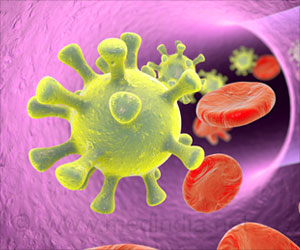Scientists have confirmed the specific immune memory T-cells where infectious HIV 'hides' in the human body to evade detection by the immune system.

‘Current HIV drugs stop the virus from replicating, but there is still no way for us to 'cure' an individual with HIV. Patients need drugs or chemotherapy for the rest of their lives.’





The team, led by Associate Professor Sarah Palmer from the University of Sydney, developed a pioneering full-length genetic sequencing assay for HIV. Using this test, the team found that genetically-intact HIV hides in specific subsets of CD4+ T-cells. Associate Professor Palmer said that this next-generation test showed that HIV hides in the body's immune memory T-cells, which is how it avoids detection from the immune system.
"Previously it was thought that HIV was hiding primarily in central memory T-cells, but our new HIV genetic sequencing test has revealed that the majority of replication-competent virus is actually hiding in effector memory T-cells.
"HIV is really very clever. Essentially, it is hiding in the exact same cells within the immune system that are meant to attack it," she said.
Effector memory T-cells are the cells in the body that 'remember' previous infections and how to defeat them. These are the cells that provide life-long immunity to infections such as measles or chicken pox.
Advertisement
"When HIV replicates it makes a lot of errors and releases a lot of defective virus.
Advertisement
"These infected cells go into a resting state and stop producing HIV, but these latent cells can wake up and start making infectious HIV." It is a ticking time bomb waiting to re-infect a patient.
"The other 95 per cent of defective virus does send the immune system into overdrive. We suspect that this 'junk' HIV can act as a decoy and draw attention away from the "real" virus hiding in the effector memory T-cells," she said.
Despite groundbreaking advances in the treatment of HIV, it remains a chronic illness across the globe. Neither a cure nor a vaccine has been achieved.
"This is a particular problem in the developing world where only 50 percent of people have access to regular HIV therapies."
If a person suddenly stops taking their HIV treatments, the virus hidden in effector memory T-cells would spring to life and start producing more HIV, and the virus will spread throughout the body within two weeks.
"Now that we've identified where the replication-competent virus is hiding, we can start work towards targeting these cells with new therapies aimed at fully eliminating HIV from the body," Associate Professor Palmer concluded.
Source-Eurekalert















